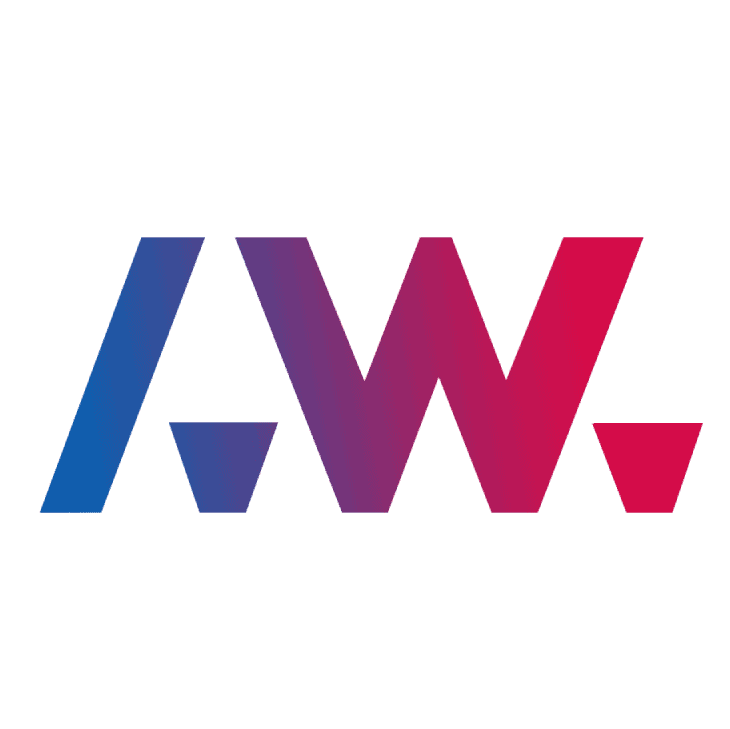Mastering Artlogic SEO
A Complete Guide for Art Galleries in 2025
In today’s competitive art market, having a strong online presence is no longer optional for galleries—it’s essential. While Artlogic provides a powerful platform for showcasing your collection, its built-in SEO tools can be quite difficult to implement effectively. The platform allows for overriding page settings, but doing so without proper understanding might do more harm than good to your search rankings.
Art World Marketing continuously works with Artlogic’s database and CMS software, and is happy to help galleries navigate these complex waters. This guide aims to demystify Artlogic’s SEO capabilities and provide a clear roadmap for optimizing your gallery website to attract more qualified visitors. By implementing the strategies outlined in this guide, you’ll be able to improve your visibility in search results, drive more targeted traffic to your site, and ultimately connect with more potential collectors. Let’s dive into the world of art gallery SEO and discover how to make Artlogic work harder for your business.
Understanding SEO Fundamentals for Art Galleries
Art galleries face unique SEO challenges that other businesses don’t. Search engines evaluate art websites differently due to the visual nature of the content and the specialized terminology of the art world. When potential collectors search for art online, they typically use specific terms related to artists, styles, mediums, or subject matter—not generic terms like “art gallery.”
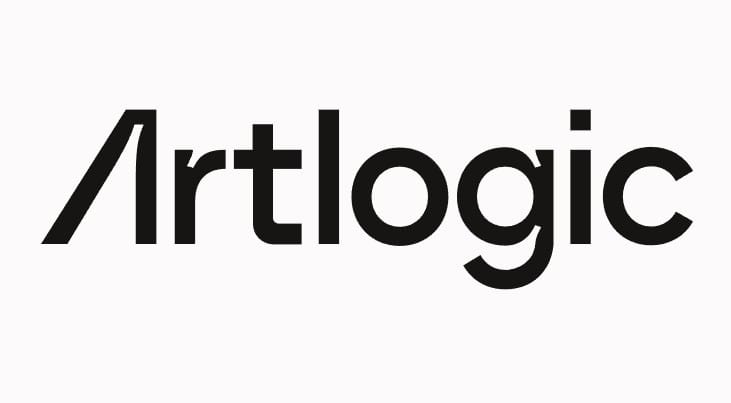
Artlogic’s platform is designed with these nuances in mind, but understanding how search engines interact with your gallery website is crucial. Google’s algorithms prioritize websites that provide valuable, relevant content to users, load quickly, and offer good user experiences. For art galleries, this means having high-quality images with proper optimization, detailed descriptions of artworks and exhibitions, and easy navigation.
The foundation of successful SEO for galleries lies in understanding that search engines can’t “see” your art—they can only read the text and metadata associated with it. This is where Artlogic’s SEO features become invaluable, helping bridge the gap between visual content and searchable text.
Defining Your SEO Strategy
Before diving into technical optimizations, you need to identify which search terms are most relevant to your gallery. Start by making a list of the artists you represent, the styles and mediums you specialize in, and the geographic areas you serve. These will form the core of your keyword strategy.
When researching keywords, balance specificity with search volume. For example, “contemporary abstract paintings London” might have fewer searches than simply “art gallery,” but the people using that specific search are much more likely to be interested in what your gallery offers.
Artlogic allows you to target different keywords on different pages, so develop a content strategy that aligns with this capability. Your homepage might target broader terms about your gallery, while individual artist pages can target specific artist names and their styles.
Set realistic goals for your SEO efforts. Art gallery SEO is competitive, but by focusing on your unique offerings and specialties, you can carve out visibility for the searches that matter most to your business.

Content Optimization for Artlogic Websites
Content is the cornerstone of effective SEO, and Artlogic’s platform gives you plenty of opportunities to optimize it. Each artwork page should contain at least 200-300 words of descriptive text. This isn’t just for SEO—it also helps potential buyers understand the artwork better, which can drive sales.
For artwork pages specifically, structure your content with at least two subheaders (H2 and H3) to organize information logically. You might use headers like “About the Artist,” “Technique and Materials,” or “Exhibition History” to break up your content.
Category pages should function as “pillar” content, providing comprehensive information about a particular artist, style, or collection. These pages should be substantial—aim for 1000-2000 words without adding fluff. Instead, use this space to provide valuable context, history, and insights that collectors would find interesting.
Quality always trumps quantity in art gallery content. Write knowledgeably about the art, use proper terminology, and avoid generic descriptions. Include specifics about techniques, inspirations, and the historical or cultural context of the work. Regular updates to your content signal to search engines that your site is active and relevant. Remember that each piece of content is an opportunity to naturally incorporate your target keywords while providing value to your visitors.
Navigating Artlogic's SEO Tools
Artlogic’s built-in SEO tools provide powerful capabilities, but they require careful handling. You can access these tools by navigating to “SEO Tools” in your CMS backend menu.
The Site Index shows all URLs that exist on your website. By clicking the pencil ‘edit’ button for any page, you can set SEO overrides for that particular page. This gives you control over various SEO elements, but remember that incorrect changes can negatively impact your search rankings.
The “Site index (active SEO)” section shows a filtered view of pages where you have activated SEO overrides, making it easier to track which pages you’ve customized.
The XML Sitemap page contains a link to your sitemap, which should be submitted to Google. This helps search engines discover and index all the pages on your site efficiently.
One of the most useful features is the SEO Focus Keyword tool. This allows you to test a keyword before editing the content of the page for SEO purposes. Enter your target keyword, and Artlogic will analyze how well your page is currently optimized for it.
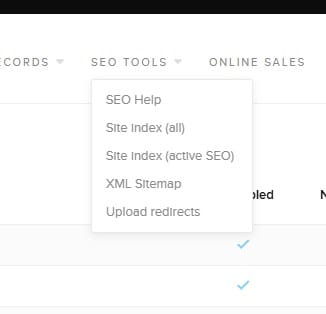

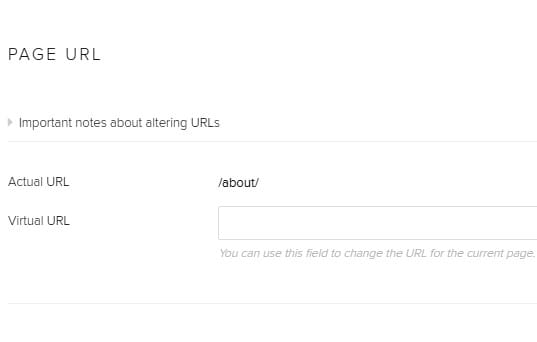
URL Structure and Management in Artlogic's SEO
Clean, descriptive URLs are valuable for both SEO and user experience. Artlogic’s ‘Virtual URL’ feature allows you to change the URL of a page to make it more user-friendly and improve SEO.
For example, you can transform a URL like /artists/24-andy-warhol/category/2/ into something more readable and keyword-rich like /limited-edition-prints-by-andy-warhol/. This makes the URL more informative for both users and search engines.
However, changing URLs should be approached with caution. Once you change a URL, the old address will still function to maintain compatibility, but Artlogic instructs search engines that the definitive link is at the new virtual URL. This helps merge the ranking for both pages, but changing URLs repeatedly can lead to confusion for search engines.
Quick Reminder: Don't Forget Redirects
When updating URLs, Artlogic will automatically search for similar URLs and suggest changes for all matching pages. This makes it easier to update multiple related pages consistently.
Always set up proper redirects when content changes location. If links to your old URLs exist on other websites, broken links can negatively impact your SEO. When making URL changes, notify partners and collaborators to update links on their websites to your new URLs.
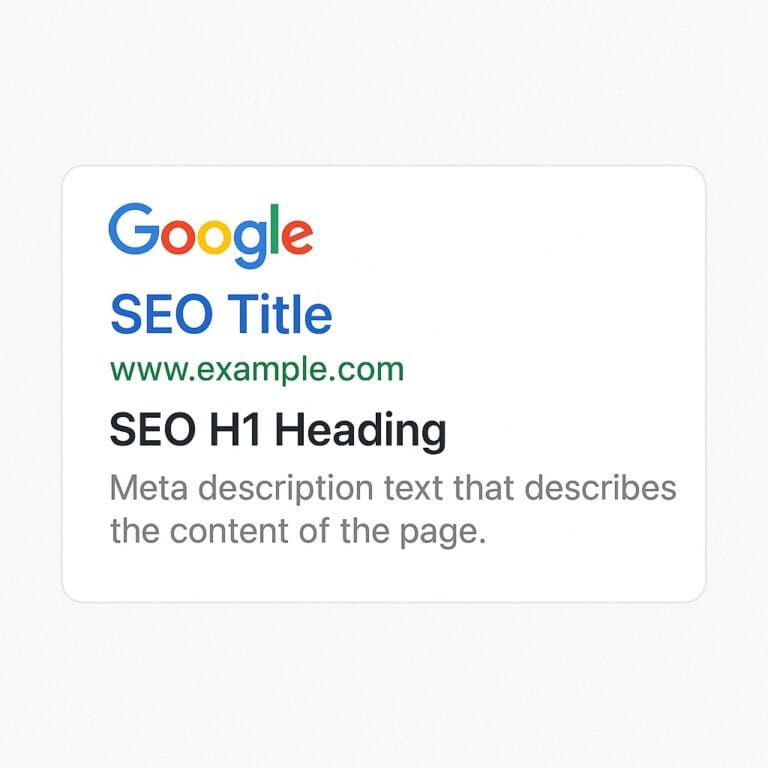
On-Page SEO: Title Tags, Headings, and Descriptions
Title tags and headings are among the most influential on-page SEO elements. In Artlogic, you can override the page Title, Heading, and Description through the SEO tools.
The SEO Title (or Title Tag) controls what appears in the browser tab and in search result titles. Ideally, it should include your focus keyword while accurately describing the page content. Keep titles under 60 characters to ensure they display fully in search results.
The SEO H1 heading is visible to users as the main heading of the page. Most pages already have an H1 tag, but you can update it to target specific keywords. Like the title, your H1 should include your focus keyword and be coherent with the page content.
The SEO description field allows you to decide what text appears under your page title in search results. While Google sometimes chooses to display different text based on the search query, a well-crafted description can improve click-through rates. Aim for 150-160 characters and include a call to action.
When implementing these elements, maintain a natural, readable style. Keyword stuffing can lead to penalties from search engines and creates a poor impression for users.
Image Optimization for Art Websites
For art galleries, images are crucial content. Optimizing them properly can significantly improve both SEO and user experience:
- Before uploading images to your Artlogic website, reduce file sizes using tools like tinypng.com. Large image files slow down your site, which negatively impacts both user experience and search rankings.
- Name your image files using keywords relevant to the artwork, artist, or exhibition. For example, instead of “IMG12345.jpg,” use “andy-warhol-queen-beatrix-screenprint.jpg.” This helps search engines understand what the image depicts.
- Alt tags are essential for both accessibility and SEO. In Artlogic, you can add alt text to all images. Include the artist name, artwork title, year, and a brief description of what’s visible in the image. For example: “Queen Beatrix by Andy Warhol, screenprint on paper.”
- For exhibitions and gallery spaces, include multiple high-quality images and detail close-ups where appropriate. This provides a better user experience and gives search engines more content to index, improving your site’s relevance for related searches.
Social Media Integration and Sharing
When your gallery pages are shared on social media, you want them to look professional and enticing. Artlogic allows you to control what images and text display when your URLs are shared on platforms like Facebook, Instagram, or WhatsApp.
Access these settings through the “Sharing & Social Media Data” section in your SEO overrides. Upload high-quality, compelling images that represent the content being shared. Write clear, engaging titles and descriptions that will entice users to click through to your site.
These social sharing elements (known as Open Graph or OG metadata) don’t directly impact search rankings, but they can significantly increase traffic to your site through social channels. This indirectly benefits your SEO by generating more engagement signals and potential backlinks.
The images you select should be properly sized for social platforms (typically 1200×630 pixels) and represent the content accurately. For exhibition pages, use striking installation views; for artist pages, use powerful examples of their work.
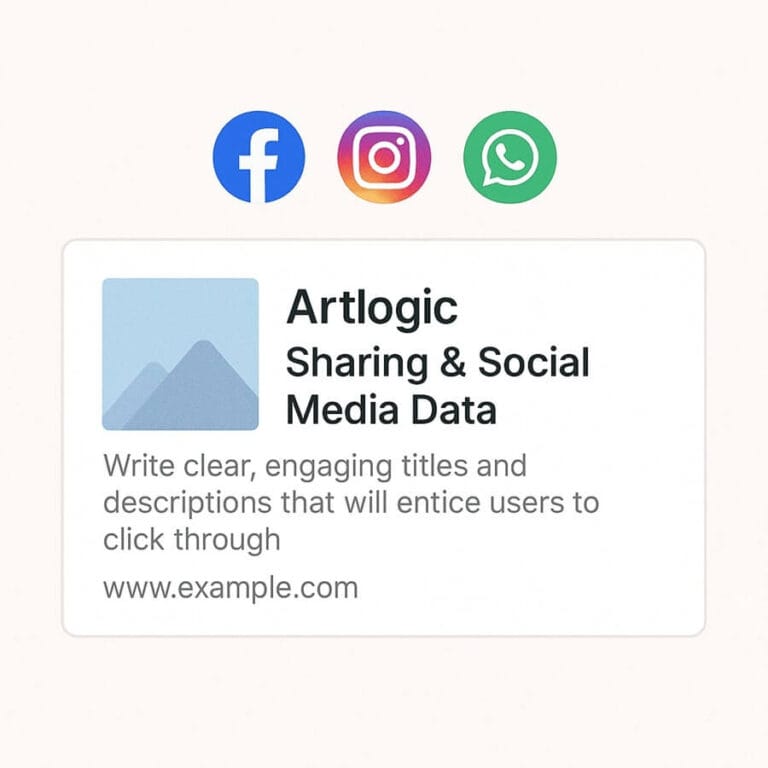
Building a Strong Link Structure
Links are one of the oldest and still most important ranking factors in SEO. Artlogic’s structure helps you create effective internal linking, but you should also work on acquiring quality external links.
For internal links, use natural anchor text (the clickable words in a link) that includes relevant keywords. When writing about an artist on your gallery page, link to their dedicated artist page. When discussing an artwork, link to its detailed page. This helps search engines understand the relationships between your content.
External links (backlinks) from reputable websites signal to search engines that your content is valuable. Build relationships with art publications, blogs, and other galleries for potential link opportunities. Consider guest posting on art websites, getting listed in art directories, and ensuring your gallery is properly cited when your artists or exhibitions are mentioned online.
Regularly check for and fix broken links on your website. Artlogic’s system can help identify these, but tools like Google Search Console can provide additional insights. When you remove content or change URLs, make sure to implement proper redirects to maintain link equity.
Monitoring and Maintaining Your SEO
SEO is not a one-time task but an ongoing process. Regularly update your content with fresh information about new exhibitions, artists, or artworks. Search engines favor websites that publish new content consistently.
After making significant changes to your website structure or adding large amounts of new content, regenerate your sitemap through Artlogic’s SEO tools. This ensures search engines can discover and index your new content quickly.
Track your performance using analytics tools to see which pages are performing well and which might need improvement. Look for metrics like organic search traffic, bounce rate, and conversion actions (such as artwork inquiries or exhibition RSVPs).
Make data-driven adjustments to your strategy based on these insights. If certain artist pages are performing well, analyze what’s working and apply those lessons to other pages. If some pages have high bounce rates, consider how you might improve the content or user experience.
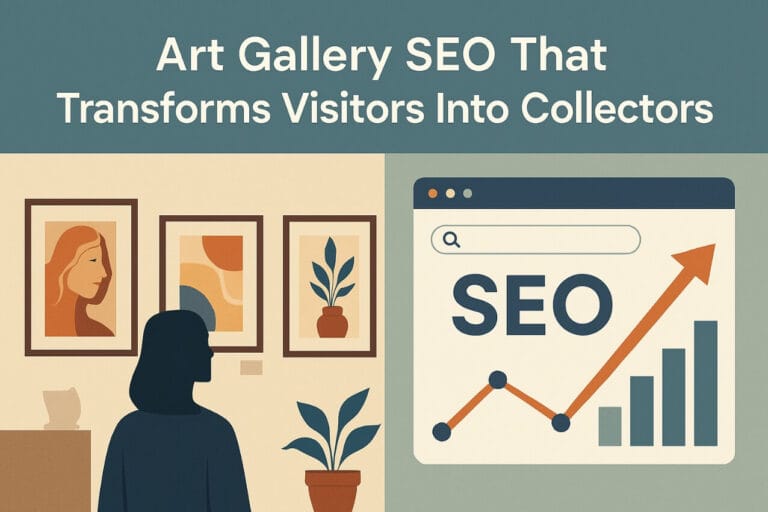
SEO in Artlogic's CMS: Technical, Content, and Link Optimization
Optimizing your Artlogic website for search engines requires a balanced approach combining technical implementation with quality content creation. While Artlogic provides powerful built-in SEO tools, using them effectively requires understanding both SEO principles and the nuances of the art market.
Focus first on the elements that will have the biggest impact: creating substantial, informative content about your artists and artworks, optimizing your images properly, and ensuring your site structure makes sense to both users and search engines.
Remember that SEO is an ongoing process that requires attention and adjustment over time. By implementing the strategies outlined in this guide, you’ll be well on your way to improving your gallery’s visibility online and connecting with more potential collectors.
Artlogic SEO Done Right: Art World Marketing
Art World Marketing continuously works with Artlogic’s database and CMS software and is happy to discuss an SEO audit for your Artlogic website to help you identify the most impactful improvements you can make.
Talk To One Of Our Experts.
Send an e-mail to Emile Haffmans, our Founder & Digital Marketing Director, directly.
